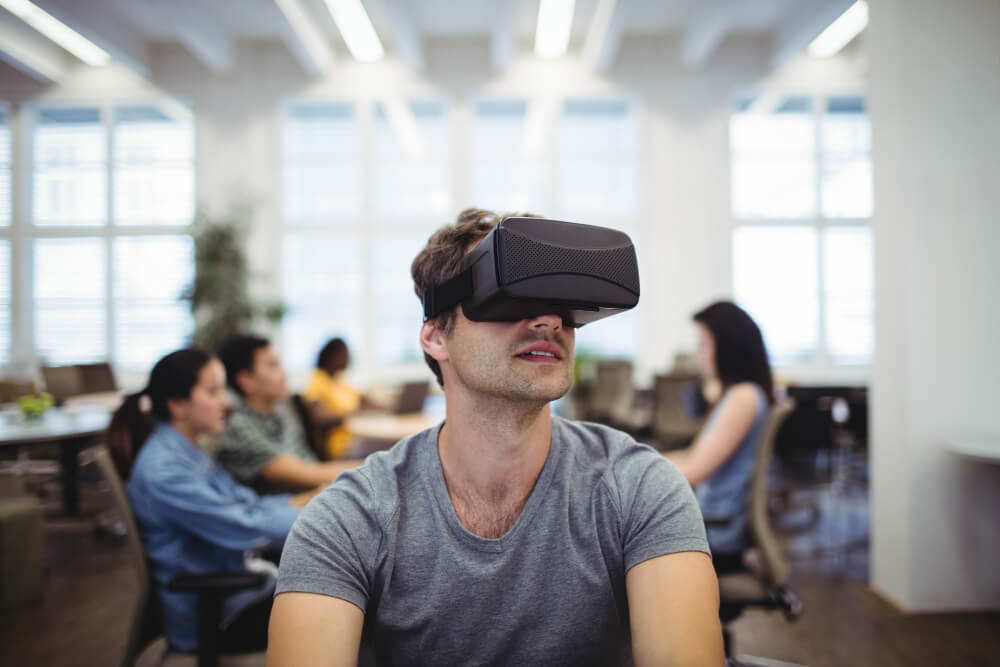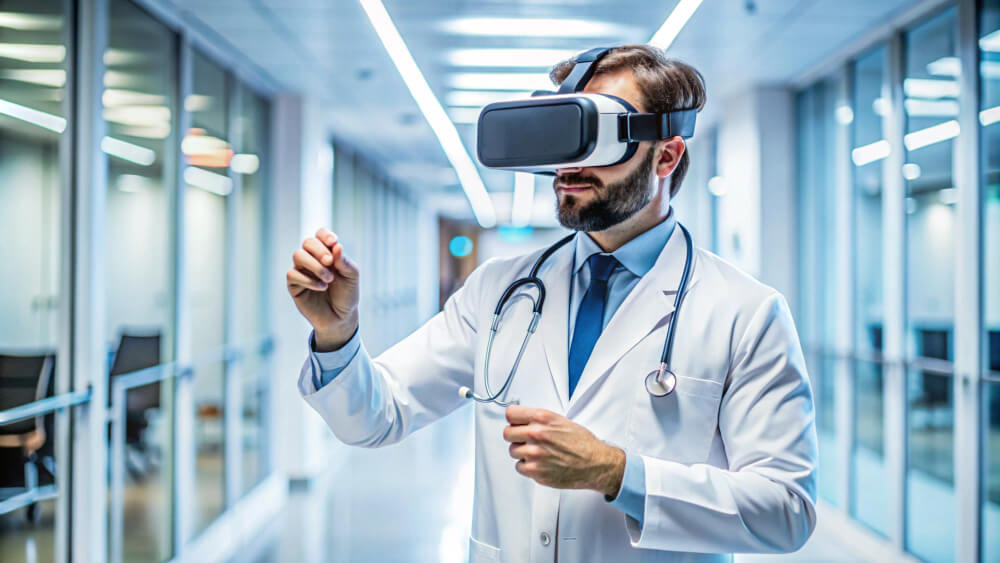Creating Immersive Learning Experiences: Best Practices for Incorporating VR into Corporate Trainer Development Programs
Table of Contents:
How to use VR in corporate training? It is possible to utilize this technology to practice soft skills, such as public speaking, improve diversity and inclusion within a company, simulate certain business situations (for instance: black friday in brick and mortar retail) or even practice handling high-risk situations. In this article, we explore the art of incorporating VR into corporate trainer development programs. We encourage you to read on.
What Development Training Can Be Conducted with VR?
Virtual reality can be used for various corporate training, to polish crucial business skills or improve the ones required to create a better workplace. Let us take a look at possible applications of VR training for businesses.
Public Speaking Training
A virtual reality setting may simulate real-life situations, such as conferences. This means that you may utilize it in order to help your employees practice before public appearances and polish their skills.
You may, for example, utilize VR for your PR officer training, in order to ensure that your businesses official communication is top-notch. Or, practice sales presentations to boost the confidence of your sales representatives.
Simulating Business Situations
Sales peaks, PR crisis, marketing faux pas – you may simulate all of them in VR and train your employees on proper reaction in such circumstances. This is illustrated best by the use of VR retail, where staff is often trained for occasions like Black Friday through simulations conducted in virtual reality.
Building Diversity and Inclusion
Virtual reality may also be used for training purposes regarding diversity and inclusion. During such training, your employees usually need to imagine the example situations, but with VR it is different – you can immerse them into the examples, letting them feel like those who are discriminated against, hence raising the awareness and empathy.
Training High-Risk Situation Handling
VR might also be of an extreme help when it comes to training reactions to high-risk situations. Take, for instance, an active shooter – while you might go through all the procedures, how can you be sure that your employees will remember (and follow) them during such a situation?
Well, you might simulate an active shooter emergency in a VR world and let them experience what such an incident looks like, and learn to react in practice. What is more, you may use the most common mistakes as examples of what should not be done, hence improving the training even further.
How to Create an Immersive Learning Experience for Your Employees with the Use of VR?
Having gone through the potential applications of VR-based training courses, we should explain how to create an immersive learning experience in virtual reality that will truly be better from traditional courses.
Selecting the Platform
First, you need to select the right platform. There are many solutions dedicated to corporate use, some for collaborative work, others for training, so you have to choose the one that suits your training needs.
Designing the Scenario
When you have your platform ready, consider what scenario you want to train your employees in. For instance, if you are planning diversity and inclusiveness training, consider what potential harassment example you would like to recreate. Then, plan how to do this in order for the scenario to feel realistic.
Measuring the Effects
Evaluating the effects of your VR corporate training might be difficult – if it’s targeted on public speaking, for instance, it will be hard to find measurable metrics to analyze. However, use data whenever possible.
For example, a good evaluation of your active shooter training should include the number of survivors after each session; a business situation simulation may be analyzed through the general efficiency and effectiveness with which a certain situation is handled. Nevertheless, this is often the most difficult step.
Conclusions
VR is a useful tool for corporate training, so you should introduce it in your business. It can help you create more immersive simulations, hence improving the effectiveness of your courses and making your staff better prepared for the upcoming or potential challenges.
You may also read: Why Businesses Need To Consider VR As Their Top Investment Choice

Author: Rafał Siejca
Rafal has over twenty years of corporate experience, including roles at Millennium Bank, Comarch, and leading software teams at PZU, one of Europe’s largest insurance companies. As one of Poland’s few true VR experts with a decade of experience, he ensures timely, high-quality project delivery as CEO and CTO.










